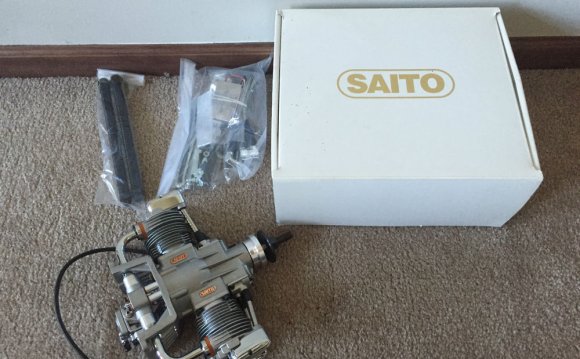
Beetle's, along with most cars and lorries, have engines operating on a 4 stroke cycle. A single stroke is the travel of the piston from its furthest from the crankshaft (Top Dead Centre [TDC]*) to its nearest (Bottom Dead Centre [BDC]*) or the other way around. Therefore, there are 2 strokes in a single revolution of an engine and it follows that a 4 stroke engine requires two revolutions to complete one cycle.
The four parts to the complete cycle are:
- the piston pulls air and fuel in
- the piston compresses the mixture
- the mixture is ignited and the piston driven down
- the piston expels the burnt mixture to atmosphere
These are known as induction, compression, power and exhaust respectively. Alternatively they are suck, push, bang, blow - but that's engineers for you. In a 4 stroke engine each of these processes has a stroke of its own.
- the piston travels from TDC to BDC on induction
- it travels from BDC to TDC on compression
- it is forced back to BDC on power
- it moves up to TDC on exhaust
Since it does different things on the both times it goes up and when it goes down something else has to change to allow it to do so. The change is caused by valves. Each cylinder has at least two valves - an inlet and exhaust. Modern engines have more than one of each as two smaller valves have a bigger area for flow than one big one and improve the engine's ability to induce or exhaust gases. The valves open and close in synchronisation with each other and the rest of the timing to allow the different operations.
- the inlet valve is open in induction but the exhaust is closed so that the piston can suck the mixture in
- both valves are shut in compression to stop the mixture escaping
- both valves remain closed during the power stroke
- the exhaust opens while the inlet stays shut during exhaust.
The valves are driven off the cam shaft. The cams attached to it lift them open against springs or allow the springs to close them. If an engine has two camshafts it means the inlet valve cams are on one and the exhaust's on the other which allows for adjustment between them to get the optimum opening times between them. The shape of the cam determines how long the valve opens for.
- *TDC is more properly called ODC where the 'O' is for 'outer' and BDC is IDC where the 'I' is 'inner'. It more accurately describes conditions where the pistons don't travel vertically, or in the same direction - a Beetle engine for instance, or a radial.
The type of engine in cars comes under the family of reciprocating internal combustion engines. Internal combustion means the heat it requires to work is generated inside the engine and reciprocating means it has pistons which go up and down. A jet engine is a rotating internal combustion engine and a Stirling engine is a reciprocating external combustion engine.
A 2 stroke engine doesn't have valves but uses the piston to cover and uncover the inlet and exhaust ports at appropriate times. They also use the crankshaft side of the piston for the flow of mixture as well as the 'proper side'. Doing this leads to the oil in the sump mixing a bit with the fuel / air mixture which means the lubricating oil deteriorates and some oil gets burned with the fuel. Some oil has to be added with a fill of fuel to replenish that burned and oil changes can be more frequent on a 2 stroke. 2 strokes produce a power stroke every revolution and are more powerful for a given size for that reason but they are less efficient. They are used on the smallest engines, such as lawnmowers, and the largest, as in ships.
Reciprocating diesel engines operate on 2 or 4 stroke cycles. They differ from petrol engines in many ways. They do not have spark plugs and ignite the fuel by compressing the air so much it heats up to a point where the fuel spontaneously ignites. The fuel is added to the air by injectors after the air is compressed to stop the explosion occurring too early. Injectors in a diesel engine put the fuel straight into the cylinder. Injectors in petrol engines put it behind the inlet valve and never directly into the cylinder. Diesel engines only meter the amount of fuel added they do not meter the amount of air which leads to variable air to fuel ratios and is part of the reason for the economy of diesels. One of the other reasons is they run 'lean'* or they produce black smoke. Petrol engines meter the amount of air using a throttle plate operated by the accelerator pedal and the amount of fuel is governed by the amount of air. The air to fuel ratio is roughly fixed in a petrol engine under all conditions. Diesel engines do not have a throttle plate. The accelerator is actually altering the amount of fuel the fuel pump can deliver. In a petrol engine the fuel pump is only required to deliver more fuel than is required and a separate control system governs how much is actually supplied to the cylinders.
RELATED VIDEO
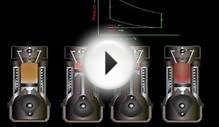
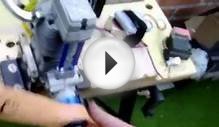
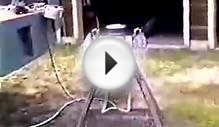

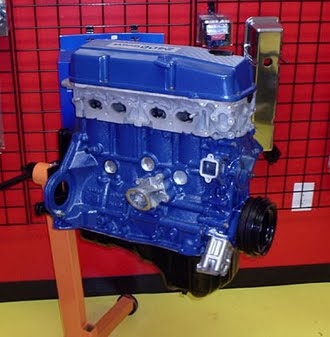 The RB engine is a 2.0–3.0 L straight-6 four-stroke petrol/gasoline engine from Nissan produced from 1985-2004.
The RB engine is a 2.0–3.0 L straight-6 four-stroke petrol/gasoline engine from Nissan produced from 1985-2004.







